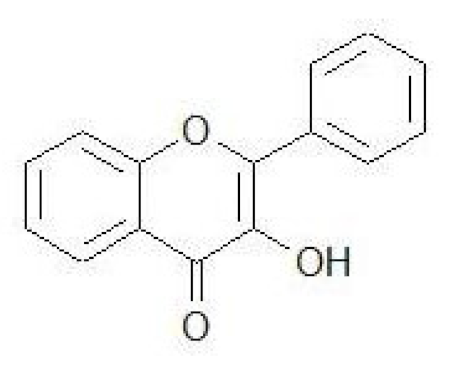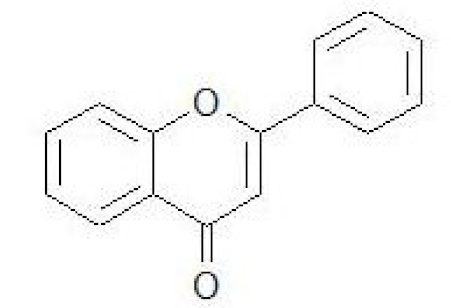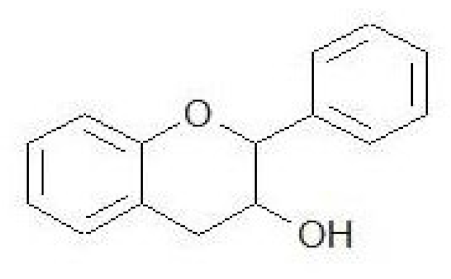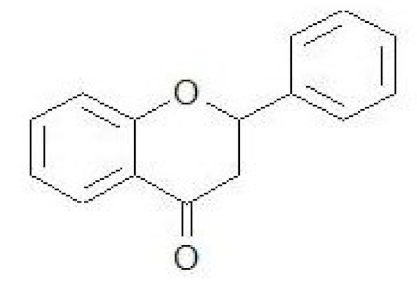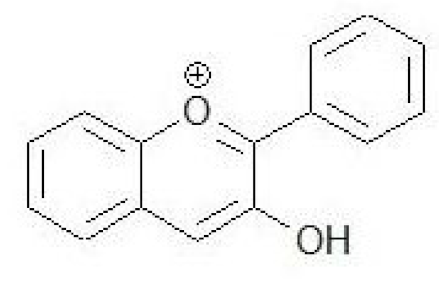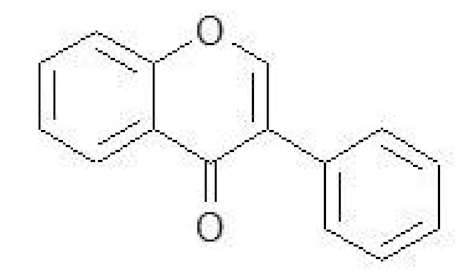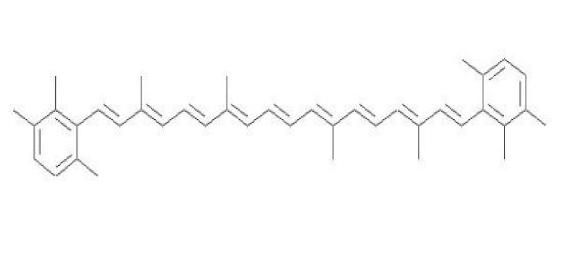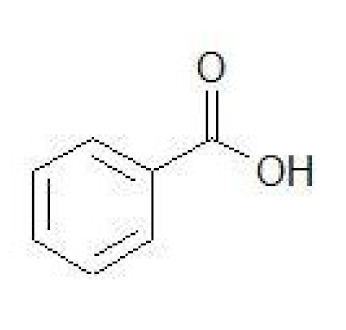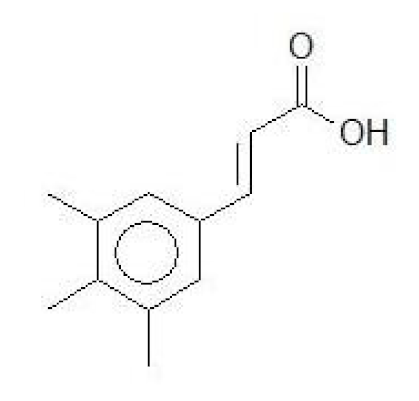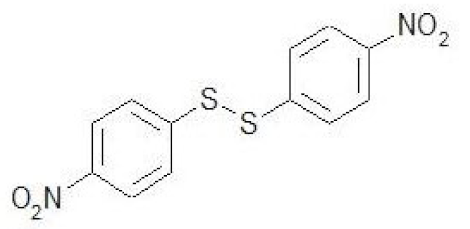Abstract
Cardiovascular diseases (CVDs) are a major global cause of disease and mortality. CVDs are a group of disorders of the heart and blood vessels and include coronary artery disease, cerebrovascular disease, heart failure, and other conditions. The most important behavioral risk factors for heart disease and stroke are diet, physical activity, smoking, and drinking. Increased intake of fruits and vegetables is associated with reducing the risk of metabolic syndrome and CVDs. Red-colored foods align with cardiovascular health by protecting the heart and blood vessels. Red fruits and vegetables include tomatoes, strawberries, raspberries, cranberries, cherries, red apples, beets, and pomegranate. In vitro and in vivo studies, as well as clinical trials, show that the components of red foods demonstrate various potential health benefits against disease. In conclusion, there are many advantages to eating vegetable foods, especially red fruits and vegetables.
1. Introduction
Cardiovascular diseases (CVDs) are the leading global cause of illness and mortality [1]. CVDs are a group of disabilities in the heart and blood vessels and include coronary artery disease, cerebrovascular disease, heart failure, and other conditions [2]. The most important behavioral risk factors for heart disease and stroke are diet, physical activity, smoking, and drinking [3]. In addition, risk factors are clustered together. Metabolic syndrome is a combination of risk factors of metabolic origins, such as inflammation and oxidative stress, and is associated with cardiovascular disease and type 2 diabetes [4]. Chronic inflammation is closely related to an imbalanced immune response and ultimately results in a variety of conditions, such as cardiovascular diseases, diabetes, obesity, pulmonary diseases, immunological diseases, and other life-threatening diseases [5]. The effects of behavioral risk factors can appear in individuals as elevated blood pressure, raised blood glucose levels, increased lipid markers, and obesity. These intermediate-risk factors can be estimated and indicate an increased risk of heart attack, stroke, heart failure, and other complications [6]. Cessation of tobacco use, reduced dietary salt intake, consumption of more fruit and vegetables, regular physical activity, and avoidance of alcohol consumption have been shown to reduce the risk of cardiometabolic disease [7].
Recently, awareness of the importance of dietary factors as a major determinant of metabolic syndrome has increased. Increased intake of fruits and vegetables is associated with a reduced risk of metabolic syndrome and CVDs [8,9,10,11]. Plant parts such as fruits, bark, roots, peels, leaves, and flowers contain several important nutritional and functional compounds that play various roles in the treatment, management, and prevention of chronic diseases [12,13,14,15]. In particular, the 2015–2020 Dietary Guidelines emphasize a healthy dietary habit throughout life that encourages diversity and nutrient density across several color categories, such as dark-green, red, and orange vegetables [16].
Red-colored foods align with the cardiovascular system by protecting the heart and blood vessels [17]. Popular red fruits and vegetables are tomatoes, strawberries, raspberries, cranberries, cherries, red apples, beets, and pomegranates. These foods also tend to be high in certain phytonutrients that may have health benefits, such as antioxidant, anti-inflammatory, and immune-modulating activities, and may improve lipid levels and reduce blood pressure. The main phytonutrients include anthocyanins, astaxanthin, and lycopene, and the wider class of flavonoids represents the various colors and has physiological effects [18,19]. In vitro and in vivo studies, along with clinical trials, have indicated that the components of red foods have various potential health benefits against diseases. These studies report the health effects of red fruits and vegetables and different mechanisms that are involved in these protective effects. Therefore, this review focuses on the physiological effects of red-colored food on metabolic and cardiovascular risk factors.
However, many studies have focused on each red-colored vegetable or fruit and the efficacy of phytochemicals contained in them, and comprehensive studies are lacking. Therefore, this review focuses on the physiological effects of red-colored food on metabolic and cardiovascular risk factors, comprehensively deals with most red color groups of vegetables and fruits, and classified by the bioactive compounds.
2. Red-Colored Foods and Bioactive Compounds
Red-colored foods have been shown to contain much higher levels of bioactive compounds such as phenolic compounds, flavonoids, and carotenoids than other foods. The high amount of bioactive compounds in red-colored food can be utilized as a functional food source against many diseases, such as diabetes, cardiovascular disease, and various other oxidative stress-induced metabolic diseases.
Table 1 and Supplementary File S1, are from FooDB (https://foodb.ca/ (accessed 15 January 2022)). Web-based searches of the PubMed database were performed using the following terms: (“Beet” OR “Tomato” OR “Italian sweet red pepper” OR “Red radish” OR “Cranberry” OR “Pomegranate” OR “Cherry” OR “Red sweet potato” OR “Strawberry” OR “Red raspberry” OR “Watermelon” OR “Red grapefruit” OR “Hibiscus” OR “Red apples” OR “Prickly pear” OR “Plum” OR “Red onion” OR “Radicchio” OR “Acerola” OR “Redcurrant” OR “Red huckleberry” OR “Fig” OR “Adzuki bean”) and (“flavonoid” OR “carotenoids” OR “phenolic acid” OR “bioactive compounds”) and (“cardiovascular disease”) and (“metabolic disease) and (“clinical trial”). The summaries of these published articles in Table 2, Table 3, Table 4 and Table 5 include intervention studies.

Table 1.
Bioactive compounds of red-colored food and their dietary sources.

Table 2.
Biological activities of red-colored food-derived flavonols, flavones, flavanols, and flavanones.

Table 3.
Biological activities of red-colored food-derived anthocyanins.

Table 4.
Biological activities of red-colored food-derived carotenoids.

Table 5.
Biological activities of other red-colored food-derived compounds.
2.1. Biological Activities of Flavonoids
A great variety of flavonoids are widely distributed in vegetables [46]. In general, flavonoids are classified as flavonols, flavones, flavanols, flavanones, anthocyanins, isoflavones, and chalcones, according to their structure, based on the C6-C3-C6 carbon skeleton that combines two 6-carbon benzene rings with 3-carbons of the heterocyclic ring [47]. One of the major subgroups that commonly occurs in vegetables is flavonoids of the flavonol type, including kaempferol, quercetin, and myricetin. Quercetin and other flavonoids exist as glycosides in vegetables [48]. Flavonoids are highly abundant as vegetable natural products and vary in their therapeutic benefits and biological activity [49]. In recent decades, many studies have been conducted to explain the mechanisms associated with flavonoid biosynthesis in plants. Several intervention studies about the biological activities of flavonoids are summarized in Table 2 and Table 3.
2.1.1. Flavonols, Flavones, Flavanols, and Flavanones
A flavonol is a flavonoid metabolite that is hydroxylated at the C-3 position of the heterocyclic ring [50]. Flavonols are widely present in vegetables, fruits, and grains. They are generally present as an aglycon-based glycoside such as kaempferol, quercetin, myricetin, isorhamnetin, and rhamnetin [51]. Common flavonols and aglycones have a minimum of 279 and 347 different glycosidic combinations, respectively [52]. Among them, quercetin 3-O-glycosides such as isoquercitrin, quercitrin, and rutin are categorized as representatives of the flavonol family, one of the subclasses of flavonoid compounds, and are the most abundant flavonols [53]. In particular, they are frequently found in cranberry, strawberry, apple, kale, and red pepper [51].
Compared with flavonols, flavone-containing plants are limited. The main flavones in edible plants are glycosides of apigenin, luteolin, and diosmetin [51]. Flavones are structurally very similar to flavonols, and there are few hydroxyl groups at the C-3 position. Flavones have three functional groups: hydroxy, carbonyl, and conjugated double bonds. Thus, flavones show a characteristic reaction of the three functional groups [54].
Flavanols have no double bond between C-2 and C-3 and no carbonyl at C-4 in the heterocyclic ring. Therefore, there are two chiral centers (C-2 and C-3) that result in four isomeric structures for each flavan-3-ol molecule. Common examples of flavanols are catechin (trans) and epicatechin (cis), which exist in two isomeric forms. (+)-catechin and (−)-epicatechin are often found in food plants [55]. Skins of grapes, apples, and blueberries are also rich in flavanols [56,57]. Unlike other flavonoids, flavanols are not glycosylated in food [58]. Catechin and epicatechin can easily condense into oligomeric procyanidins, which produce anthocyanidins under aqueous acidic conditions with heating [59,60].
Flavanones are widely distributed in approximately 42 larger plants. In particular, they are found in the Compositae, Leguminosae, and Rutaceae. Heterocyclic flavanones also contain a ketone group, but there is no unsaturated carbon-carbon bond [61]. Flavanones, called dihydroflavones, lack the double bond between C-2 and C-3 in the heterocyclic ring of the flavonoid skeleton, which is present in flavones and flavonols, and flavanone is found in high concentrations in citrus fruits. They are also found in tomatoes and aromatic plants, but their main sources are citrus fruits, especially grapefruit. Flavanones naturally exist in the form of aglycon and glycoside, while the major aglycones are naringenin in grapefruit and hesperetin in oranges [62].
In many studies, the therapeutic effects of red beetroot have been shown under a variety of conditions, including complications associated with metabolic syndrome [63]. One of the main mechanisms by which flavonols can reduce cardiovascular risk is their vasodilatory and antihypertensive effects [64]. The data suggest improvements in endothelial function, an effect that would also be expected to reduce the risk of hypertension and the development of atherosclerosis. One study examined the blood pressure-lowering effects of 0, 100, or 200 mg red raspberry extracts/(kg∙d) in normal and spontaneously hypertensive rats. After 5 weeks, the red raspberry extracts demonstrated a dose-dependent antihypertensive effect in spontaneously hypertensive rats, effects that coincided with an increase in nitrogen oxide (NO) activation, a decrease in vasoconstrictive endothelin-1, dose-specific antioxidative actions, and improved vascular endothelial dysfunction [65]. It is well-known that in endothelial cells, NO plays an important role in regulating vascular relaxation and blood pressure [66].
In general, apple flavonoids may have beneficial effects on blood pressure, vascular function, and blood lipid levels. Moreover, plum juice consumption modulates a cluster of pathways that are deregulated in obesity and prevents obesity-associated metabolic disorders and the increased risk for cardiovascular disease. Koutsos, Athanasios, et al. [20] showed the beneficial hypocholesterolemic and vascular effects of the daily consumption of apples by mildly hypercholesterolemic individuals. Flavonoid-rich beetroot was effective in improving blood pressure, endothelial function, and systemic inflammation, and raw beetroot juice had greater antihypertensive effects than cooked beet [22]. In a study by Moazzen, Hossein, and Mohammad Alizadeh [23], pomegranate juice supplementation was shown to lower the levels of systolic and diastolic blood pressure in patients with metabolic syndrome as well as blood levels of hs-CRP. Consumption of raw red onion, which is rich in quercetin, significantly decreased total cholesterol levels in women with polycystic ovary syndrome [24]. The many beneficial effects of flavonoids include the ability to interfere with lipid metabolism, reduce platelet adhesion, and enhance endothelial function.
2.1.2. Anthocyanins
Anthocyanins are one of the most commonly used water-soluble phenolic compounds and principally represent natural pigments from red to purple. Anthocyanin is found in various tissues of plants, such as flowers, fruits, stems, and roots, and has proven to be protective against many cardiovascular risk factors [67,68].
Most types of anthocyanins are based on cyanidin, delphinidin, and pelargonidin along with methylation, methoxylation, hydroxylation, and glycosylation. The most important physical parameter of anthocyanins is color, which depends on pH. They turn red under acidic conditions and blue under basic conditions. The degree of hydroxylation, methylation and glycosylation also affects color [69,70].
In particular, berries such as cranberry, strawberry, and red raspberry are good sources of anthocyanins, and red apple, red currant, cherry, and plum are also rich in anthocyanidins [71]. Cranberry flavonoids may have several distinct effects on the development of atherosclerosis. Monomers and oligomer flavonoids, for example, can be absorbed and metabolized and have postabsorptive effects on the development of atherosclerosis and cardiovascular diseases such as LDL protection against oxidation by arterial endothelial cells, arterial smooth muscle cells, and intimal macrophages; inhibition of the inflammatory response of these cells to modified LDL and direct effects on immune cells involved in the inflammatory process; vasodilation and improved blood flow; and inhibition of platelet aggregation and thrombosis [72].
Additionally, Basu, Arpita, et al. [26] revealed that cranberry reduces lipid oxidation and increases plasma antioxidant capacity in women with metabolic syndrome, and Novotny, Janet A., et al. [27] showed that cranberry improved several risk factors for cardiovascular disease in adults, including circulating triglycerides, CRP, glucose, insulin resistance, and diastolic blood pressure.
Numerous in vitro and in vivo studies have suggested that strawberry supplementation reduces the risk of CVDs. In other animal models (obese and lean C57BL/6 mice), strawberry supplementation decreased overall blood glucose concentrations independent of the content of dietary fat and reduced plasma CRP, supporting a potential protective effect against cardiovascular risk.
Intervention studies have reported many cardiometabolic disease outcomes affected by cherry. Aboo Bakkar, Zainie, et al. [29], Johnson, Sarah A., et al. [30], Kent, Katherine, et al. [31], and Keane, Karen M., et al. [32] showed significantly lower levels of blood pressure, lipid-related markers, and adhesion molecules and evidence of cardiovascular-related outcomes (FMD, nitrate and nitrite, PRX1) after consumption of cherry. Short-term strawberry supplements improved the risk factors for selected atherosclerosis, including dyslipidemia and adhesion molecules in subjects with metabolic syndrome [34].
2.1.3. Isoflavones
Isoflavones are mainly distributed in legume plants, with phenol rings attached to the C-3 and C-4 positions of the heterocyclic ring [51,52]. Genistein, daidzein, glycitein, biochanin A, and formononetin are different isoflavones found in soy, red clover, and cherry. They generally exist as glycosides in plants. Chalcones have different structures than other flavonoids. C-3 is an open ring and is mainly found in apples and hops [56].
Betavulgarin in beet and genistein in cherry are classified as isoflavonoids. The cardioprotective effects of beetroot are from the combination of nitrate/nitrite and bioactive compounds that limit the production of free radicals and regulate gene expression. In vitro and in vivo studies and clinical trials have shown that beets and their bioactive phytochemicals are promising in the development of new adjuvant therapies to improve cardiovascular diseases [73,74].
2.2. Biological Activities of Carotenoids
Carotenoids are a natural pigment found in plants and microorganisms, but they are not synthesized in animals [75,76]. These are micro components of fruits and vegetables which contribute to the inverse relationship between fruit and vegetable consumption and the risk of cardiovascular disease, cancer, and other metabolic diseases [77,78]. As substantial dietary sources of vitamin A, they have excellent antioxidant properties [77]. In plants, carotenoids, along with chlorophyll, are essential pigments for photosynthetic organs and are responsible for the yellow, orange, red and purple colors of fruits and vegetables [79].
More than 600 carotenoids have been identified in nature, of which approximately 40 are present in a typical human diet, and approximately 20 have been identified in blood and tissues. ß-Carotene, α-carotene, lycopene, β-cryptoxanthin, and lutein account for more than 90% of the carotenoids in humans [80]. All carotenoids have certain common chemical features, such as a polyisoprenoid structure, the long conjugated chain of double bonds at the center of the molecules, and almost bilateral symmetry around the central double bond [81]. Carotenoids are rich in conjugated double bonds and may undergo cis-trans isomerization. The variant is more stable and is the most common form in food [78].
Tomatoes, in particular, contain many carotenoids. Watermelon contains the carotenoids lycopene and lutein. Additionally, beet, Italian sweet red pepper, red radish, cranberry, red raspberry, red sweet potato, strawberry, apple, and fig contain carotenoids. Several studies have elucidated the cardiovascular effect of tomatoes, as shown in Table 4. In studies by Colmán-Martínez, Mariel, et al. [36] and Ferro, Yvelise, et al. [37], participants at cardiovascular risk were treated with tomato, which contains lycopene and carotene, in a crossover design. Systolic blood pressure and adhesion molecules were significantly lower in the treatment group than in the placebo group. Another double-blind, randomized, placebo-controlled study [38] found that the tomato nutrient complex is effective in maintaining normal blood pressure in untreated hypertensive individuals. Daily tomato paste consumption exerts a beneficial effect on endothelial function [39] and reduces the risk of inflammatory diseases such as CVDs and diabetes, which are associated with obesity [40].
Carotenoid is a regulator of free radicals and NOS, so antioxidant and anti-inflammatory activity can help cardiovascular risk factors such as inflammation, high lipid levels, high blood pressure, insulin resistance, and obesity. As a result, the reduction in blood pressure levels and inflammation, as well as the improvement of lipid profiles, can lead to cardiovascular health benefits [82]. Since carotenoids have hydrophobic characteristics, interactions with carotenoids and free radicals occur in cell membranes and lipoprotein components in a lipophilic environment [83].
2.3. Biological Activities of Other Compounds (Organosulfur Compounds, Phenolic Acids)
Phenolic acids are widely distributed in almost all fruits [84]. There are two types of phenolic acids as derivatives of benzoic acid and derivatives of cinnamic acid. Benzoic acid derivatives have a C1-C6 skeleton, while cinnamic acid derivatives have a C3-C6 backbone [85,86]. The most common hydroxybenzoic acids are p-hydroxybenzoic acid, vanillic acid, and syringic acid, whereas p-coumaric, caffeic, ferulic, and sinapic acids are the common hydroxycinnamic acids in fruit [87]. For example, they exist in complex structures such as hydrolyzable tannin, gallotannins of mango, and ellagitannins of red fruits such as strawberries, raspberries, and blackberries [88].
In fruits, vegetables, and grains, phenolic acids are distributed throughout the plant, including the seeds, roots, and stems. Most of these compounds are linked and hydrolyzed with structural components of plants (cellulose, proteins, and lignin), larger polyphenols (flavonoids), smaller organic molecules (glucose, quinic, maleic, or tartaric acid), or other natural products (terpenes) through acetal bonds and can be hydrolyzed upon acid or alkaline hydrolysis or by enzymes [52].
Folic acid, which is abundant in hibiscus, belongs to the class of organic compounds known as methoxyphenols. Methoxyphenols are compounds containing a methoxy group attached to the benzene ring of a phenol moiety. Additionally, gallic acid, 3-O-methylgallic acid, 4-O-methylgallic acid, and hippuric acid are the main phenolic metabolites detected in hibiscus. Hibiscus extract improves postprandial vascular function and reduces endothelial dysfunction and cardiovascular risk [44].
3. Conclusions and Future Perspectives
Modern nutritional science explains the diversity of ingredients and mechanisms in which foods affect health. Regarding the chemical composition of food, many bioactive compounds present in plants, fruits, and vegetables are currently known. Biologically active compounds from food play a substantial role in preventing diseases. Such compounds are related to the essential aspects of the health benefits of food, and potentially valuable compounds such as isoflavone, and phytochemicals are used as effective preventive strategies for the occurrence of various human cardiovascular diseases, diabetes, and metabolic disorders [89].
Red fruits and vegetables have positive beneficial effects on the human body. Various fruits, such as berries, cherries, apples, watermelons, and tomatoes, are related to heart health improvement. Various ingredients in red foods can help reduce basic irritation and strengthen health status by reducing disease. These factors not only help to fight inflammation but also improve body function [19].
Numerous in vitro, in vivo, and clinical studies support the multifarious beneficial effects of red-colored food on several risk factors and pathways associated with cardiometabolic diseases. In several animal experiments and intervention studies, the administration of bioactive compounds of red food exhibited vasorelaxation effects and reduced blood pressure with the regulation of lipid levels with evidence for both direct and indirect mechanisms. Overall, increasing evidence supports the significant cardiometabolic benefits of red-colored foods rich in flavonoids, carotenoids, and other phenolics. Since nutritional intake is important for cardiovascular and metabolic health, these results support the need for further active research on the relevant ingredients, biological mechanisms, and clinical effects of food [90].
In conclusion, there are numerous benefits to eating plant-based foods, especially red fruits and vegetables. Ensuring the consumption of red foods will enable the individual to reduce the development of cardiovascular diseases and metabolic diseases. Phytochemicals in red foods may help to offset an increased risk of chronic disease.
Supplementary Materials
The following supporting information can be downloaded at: https://www.mdpi.com/article/10.3390/app12041786/s1, Supplementary File S1: Red colored food.
Author Contributions
Conceptualization, S.-y.P. and J.Y.K.; investigation, S.-y.P. and M.J.P.; data curation, S.-y.P. and M.J.P.; writing—original draft preparation, S.-y.P. and J.Y.K.; writing—review and editing, S.-y.P. and J.Y.K.; visualization, S.-y.P. and M.J.P.; supervision, J.Y.K.; project administration, J.Y.K. All authors have read and agreed to the published version of the manuscript.
Funding
No external fundings.
Acknowledgments
This research was supported by the 2021 Discovering Functional Crops Project of The Food Industry Promotional Agency of Korea.
Conflicts of Interest
The authors declare no conflict of interest.
References
- Gaziano, T.; Reddy, K.S.; Paccaud, F.; Horton, S.; Chaturvedi, V. Cardiovascular disease. In Disease Control Priorities in Developing Countries, 2nd ed.; The International Bank for Reconstruction and Development: Washington, DC, USA, 2006. [Google Scholar]
- Mendis, S.; Banerjee, A. Cardiovascular disease: Equity and social determinants. In Equity, Social Determinants and Public Health Programmes; World Health Organization: Geneva, Switzerland, 2010; Volume 31, p. 48. [Google Scholar]
- Hajar, R. Framingham contribution to cardiovascular disease. Heart Views 2016, 17, 78. [Google Scholar] [CrossRef] [PubMed]
- Bano, K.A.; Batool, A. Metabolic syndrome, cardiovascular disease and type—2 diabetes. JPMA J. Pak. Med. Assoc. 2007, 57, 511. [Google Scholar] [PubMed]
- Pal, H.C.; Pearlman, R.L.; Afaq, F. Fisetin and its role in chronic diseases. In Anti-inflammatory Nutraceuticals and Chronic Diseases; Springer: Cham, Switzerland, 2016; pp. 213–244. [Google Scholar]
- Bhawana, D.; Neetu, S. Public knowledge of cardiovascular diseases and its risk factors among early adulthood: A review. IJAR 2015, 1, 658–660. [Google Scholar]
- Buttar, H.S.; Li, T.; Ravi, N. Prevention of cardiovascular diseases: Role of exercise, dietary interventions, obesity and smoking cessation. Exp. Clin. Cardiol. 2005, 10, 229. [Google Scholar] [PubMed]
- De Oliveira, E.P.; McLellan, K.C.P.; de Arruda Silveira, L.V.; Burini, R.C. Dietary factors associated with metabolic syndrome in Brazilian adults. Nutr. J. 2012, 11, 13. [Google Scholar] [CrossRef] [Green Version]
- Kwaśniewska, M.; Kaleta, D.; Dziankowska-Zaborszczyk, E.; Drygas, W. Healthy behaviours, lifestyle patterns and sociodemographic determinants of the metabolic syndrome. Cent. Eur. J. Public Health 2009, 17, 14–19. [Google Scholar] [CrossRef] [Green Version]
- Esmaillzadeh, A.; Kimiagar, M.; Mehrabi, Y.; Azadbakht, L.; Hu, F.B.; Willett, W.C. Fruit and vegetable intakes, C-reactive protein, and the metabolic syndrome. Am. J. Clin. Nutr. 2006, 84, 1489–1497. [Google Scholar] [CrossRef]
- Kouki, R.; Schwab, U.; Hassinen, M.; Komulainen, P.; Heikkilä, H.; Lakka, T.; Rauramaa, R. Food consumption, nutrient intake and the risk of having metabolic syndrome: The DR’s EXTRA Study. Eur. J. Clin. Nutr. 2011, 65, 368–377. [Google Scholar] [CrossRef] [PubMed]
- Chowdhury, M.R.H.; Sagor, M.A.T.; Tabassum, N.; Potol, M.A.; Hossain, H.; Alam, M.A. Supplementation of Citrus maxima peel powder prevented oxidative stress, fibrosis, and hepatic damage in carbon tetrachloride (CCl4) treated rats. Evid. Based Complementary Altern. Med. 2015, 2015, 598179. [Google Scholar] [CrossRef] [Green Version]
- Abu Taher Sagor, M.; Mahmud Reza, H.; Tabassum, N.; Sikder, B.; Ulla, A.; Subhan, N.; Hemayet Hossain, M.; Ashraful Alam, M. Supplementation of rosemary leaves (Rosmarinus officinalis) powder attenuates oxidative stress, inflammation and fibrosis in carbon tetrachloride (CCl4) treated rats. Curr. Nutr. Food Sci. 2016, 12, 288–295. [Google Scholar] [CrossRef]
- Mohabbulla Mohib, M.; Fazla Rabby, S.; Paran, T.Z.; Mehedee Hasan, M.; Ahmed, I.; Hasan, N.; Abu Taher Sagor, M.; Mohiuddin, S. Protective role of green tea on diabetic nephropathy—A review. Cogent Biol. 2016, 2, 1248166. [Google Scholar] [CrossRef]
- Alam, P.; Raka, M.A.; Khan, S.; Sarker, J.; Ahmed, N.; Nath, P.D.; Hasan, N.; Mohib, M.M.; Tisha, A.; Sagor, M.A.T. A clinical review of the effectiveness of tomato (Solanum lycopersicum) against cardiovascular dysfunction and related metabolic syndrome. J. Herb. Med. 2019, 16, 100235. [Google Scholar] [CrossRef]
- U.S. Department of Health and Human Services; US Department of Agriculture. 2015–2020 Dietary Guidelines for Americans; December 2015 version; U.S. Department of Health and Human Services: Washington, DC, USA, 2019.
- Blekkenhorst, L.C.; Sim, M.; Bondonno, C.P.; Bondonno, N.P.; Ward, N.C.; Prince, R.L.; Devine, A.; Lewis, J.R.; Hodgson, J.M. Cardiovascular health benefits of specific vegetable types: A narrative review. Nutrients 2018, 10, 595. [Google Scholar] [CrossRef] [PubMed] [Green Version]
- Minich, D.M. A review of the science of colorful, plant-based food and practical strategies for “eating the rainbow”. J. Nutr. Metab. 2019, 2019, 2125070. [Google Scholar] [CrossRef] [PubMed]
- Ijaz, N.; Saeed, S.; Khalid, S.; Sajjad, S.; Umme, Q.; Zubair, I.; Tariq, N.; Ayub, R.; Naveed, F.; Wahid, A.; et al. Red Color Foods in Heart Health. Merit Res. J. Food Sci. Technol. 2020, 5, 22–31. [Google Scholar] [CrossRef]
- Caballero, B.; Trugo, L.C.; Finglas, P.M. Encyclopedia of Food Sciences and Nutrition; Academic Press: Cambridge, MA, USA, 2003. [Google Scholar]
- Liu, W.; Feng, Y.; Yu, S.; Fan, Z.; Li, X.; Li, J.; Yin, H. The Flavonoid Biosynthesis Network in Plants. Int. J. Mol. Sci. 2021, 22, 12824. [Google Scholar] [CrossRef] [PubMed]
- Terao, J.; Kawai, Y.; Murota, K. Vegetable flavonoids and cardiovascular disease. Asia Pac. J. Clin. Nutr. 2008, 17, 291–293. [Google Scholar] [PubMed]
- Mahmoud, A.M.; Hernandez Bautista, R.J.; Sandhu, M.A.; Hussein, O.E. Beneficial effects of citrus flavonoids on cardiovascular and metabolic health. Oxidative Med. Cell. Longev. 2019, 2019, 5484138. [Google Scholar] [CrossRef] [PubMed] [Green Version]
- Lin, S.; Singh, R.K.; Navarre, D.A. R2R3-MYB transcription factors, StmiR858 and sucrose mediate potato flavonol biosynthesis. Hortic. Res. 2021, 8, 25. [Google Scholar] [CrossRef] [PubMed]
- Terahara, N. Flavonoids in foods: A review. Nat. Prod. Commun. 2015, 10, 521–528. [Google Scholar] [CrossRef] [PubMed] [Green Version]
- Nankar, R.P.; Raman, M.; Doble, M. Nanoformulations of polyphenols for prevention and treatment of cardiovascular and metabolic disorders. In Emulsions; Elsevier: Amsterdam, The Netherlands, 2016; pp. 107–151. [Google Scholar]
- D’Andrea, G. Quercetin: A flavonol with multifaceted therapeutic applications? Fitoterapia 2015, 106, 256–271. [Google Scholar] [CrossRef] [PubMed]
- Das, A.B.; Goud, V.V.; Das, C. 9—Phenolic Compounds as Functional Ingredients in Beverages. In Value-Added Ingredients and Enrichments of Beverages; Grumezescu, A.M., Holban, A.M., Eds.; Academic Press: Cambridge, MA, USA, 2019; pp. 285–323. [Google Scholar]
- Bulea, M.; Khanb, F.; Niazd, K. Flavonoids (flavones, flavonols, flavanones, flavanonols, flavanols or flavan-3-ols, isoflavones, anthocyanins, chalcones/coumestans). In Recent Advances in Natural Products Analysis; Elsevier: Amsterdam, The Netherlands, 2015; pp. 42–56. [Google Scholar]
- Tsao, R.; Yang, R.; Young, J.C.; Zhu, H. Polyphenolic profiles in eight apple cultivars using high-performance liquid chromatography (HPLC). J. Agric. Food Chem. 2003, 51, 6347–6353. [Google Scholar] [CrossRef] [PubMed]
- Prior, R.L.; Lazarus, S.A.; Cao, G.; Muccitelli, H.; Hammerstone, J.F. Identification of procyanidins and anthocyanins in blueberries and cranberries (Vaccinium spp.) using high-performance liquid chromatography/mass spectrometry. J. Agric. Food Chem. 2001, 49, 1270–1276. [Google Scholar] [CrossRef] [PubMed]
- Herrero, M.; Plaza, M.; Cifuentes, A.; Ibáñez, E. 4.08—Extraction Techniques for the Determination of Phenolic Compounds in Food. In Comprehensive Sampling and Sample Preparation; Pawliszyn, J., Ed.; Academic Press: Oxford, UK, 2012; pp. 159–180. [Google Scholar]
- Ky, I.; Le Floch, A.; Zeng, L.; Pechamat, L.; Jourdes, M.; Teissedre, P.L. Tannins. In Encyclopedia of Food and Health; Caballero, B., Finglas, P.M., Toldrá, F., Eds.; Academic Press: Oxford, UK, 2016; pp. 247–255. [Google Scholar]
- Hollman, P.C.H.; Arts, I.C.W. Flavonols, flavones and flavanols–nature, occurrence and dietary burden. J. Sci. Food Agric. 2000, 80, 1081–1093. [Google Scholar] [CrossRef]
- Tsao, R. Chemistry and biochemistry of dietary polyphenols. Nutrients 2010, 2, 1231–1246. [Google Scholar] [CrossRef] [PubMed]
- Zuiter, A.S. Proanthocyanidin: Chemistry and Biology: From Phenolic Compounds to Proanthocyanidins. In Reference Module in Chemistry, Molecular Sciences and Chemical Engineering; Elsevier: Amsterdam, The Netherlands, 2014. [Google Scholar]
- Vidal, P.J.; López-Nicolás, J.M.; Gandía-Herrero, F.; García-Carmona, F. Inactivation of lipoxygenase and cyclooxygenase by natural betalains and semi-synthetic analogues. Food Chem. 2014, 154, 246–254. [Google Scholar] [CrossRef] [PubMed]
- Ulusoy, H.G.; Sanlier, N. A minireview of quercetin: From its metabolism to possible mechanisms of its biological activities. Crit. Rev. Food Sci. Nutr. 2020, 60, 3290–3303. [Google Scholar] [CrossRef] [PubMed]
- Jia, H.; Liu, J.W.; Ufur, H.; He, G.S.; Liqian, H.; Chen, P. The antihypertensive effect of ethyl acetate extract from red raspberry fruit in hypertensive rats. Pharmacogn. Mag. 2011, 7, 19. [Google Scholar] [CrossRef] [PubMed] [Green Version]
- Ciumărnean, L.; Milaciu, M.V.; Runcan, O.; Vesa, Ș.C.; Răchișan, A.L.; Negrean, V.; Perné, M.-G.; Donca, V.I.; Alexescu, T.-G.; Para, I. The effects of flavonoids in cardiovascular diseases. Molecules 2020, 25, 4320. [Google Scholar] [CrossRef] [PubMed]
- Koutsos, A.; Riccadonna, S.; Ulaszewska, M.M.; Franceschi, P.; Trošt, K.; Galvin, A.; Braune, T.; Fava, F.; Perenzoni, D.; Mattivi, F. Two apples a day lower serum cholesterol and improve cardiometabolic biomarkers in mildly hypercholesterolemic adults: A randomized, controlled, crossover trial. Am. J. Clin. Nutr. 2020, 111, 307–318. [Google Scholar] [CrossRef] [PubMed]
- Asgary, S.; Afshani, M.R.; Sahebkar, A.; Keshvari, M.; Taheri, M.; Jahanian, E.; Rafieian-Kopaei, M.; Malekian, F.; Sarrafzadegan, N. Improvement of hypertension, endothelial function and systemic inflammation following short-term supplementation with red beet (Beta vulgaris L.) juice: A randomized crossover pilot study. J. Hum. Hypertens. 2016, 30, 627–632. [Google Scholar] [CrossRef] [PubMed]
- Moazzen, H.; Alizadeh, M. Effects of pomegranate juice on cardiovascular risk factors in patients with metabolic syndrome: A double-blinded, randomized crossover controlled trial. Plant Foods Hum. Nutr. 2017, 72, 126–133. [Google Scholar] [CrossRef] [PubMed]
- Ebrahimi-Mamaghani, M.; Saghafi-Asl, M.; Pirouzpanah, S.; Asghari-Jafarabadi, M. Effects of raw red onion consumption on metabolic features in overweight or obese women with polycystic ovary syndrome: A randomized controlled clinical trial. J. Obstet. Gynaecol. Res. 2014, 40, 1067–1076. [Google Scholar] [CrossRef] [PubMed]
- Chai, S.C.; Hooshmand, S.; Saadat, R.L.; Payton, M.E.; Brummel-Smith, K.; Arjmandi, B.H. Daily apple versus dried plum: Impact on cardiovascular disease risk factors in postmenopausal women. J. Acad. Nutr. Diet. 2012, 112, 1158–1168. [Google Scholar] [CrossRef] [PubMed]
- Dow, C.A.; Going, S.B.; Chow, H.-H.S.; Patil, B.S.; Thomson, C.A. The effects of daily consumption of grapefruit on body weight, lipids, and blood pressure in healthy, overweight adults. Metabolism 2012, 61, 1026–1035. [Google Scholar] [CrossRef]
- Yoshida, K.; Mori, M.; Kondo, T. Blue flower color development by anthocyanins: From chemical structure to cell physiology. Nat. Prod. Rep. 2009, 26, 884–915. [Google Scholar] [CrossRef] [PubMed]
- Riaz, M.; Zia-Ul-Haq, M.; Saad, B. Anthocyanins and Human Health: Biomolecular and Therapeutic Aspects; Springer: Berlin/Heidelberg, Germany, 2016. [Google Scholar]
- Clifford, M.N. Anthocyanins–nature, occurrence and dietary burden. J. Sci. Food Agric. 2000, 80, 1063–1072. [Google Scholar] [CrossRef]
- Khoo, H.E.; Azlan, A.; Tang, S.T.; Lim, S.M. Anthocyanidins and anthocyanins: Colored pigments as food, pharmaceutical ingredients, and the potential health benefits. Food Nutr. Res. 2017, 61, 1361779. [Google Scholar] [CrossRef] [PubMed] [Green Version]
- De Mejia, E.G.; Rebollo-Hernanz, M.; Aguilera, Y.; Martín-Cabrejas, M.A. Role of anthocyanins in oxidative stress and the prevention of cancer in the digestive system. In Cancer; Elsevier: Amsterdam, The Netherlands, 2021; pp. 265–280. [Google Scholar]
- Reed, J. Cranberry flavonoids, atherosclerosis and cardiovascular health. Crit. Rev. Food Sci. Nutr. 2002, 42, 301–316. [Google Scholar] [CrossRef] [PubMed]
- Basu, A.; Betts, N.M.; Ortiz, J.; Simmons, B.; Wu, M.; Lyons, T.J. Low-energy cranberry juice decreases lipid oxidation and increases plasma antioxidant capacity in women with metabolic syndrome. Nutr. Res. 2011, 31, 190–196. [Google Scholar] [CrossRef] [PubMed] [Green Version]
- Novotny, J.A.; Baer, D.J.; Khoo, C.; Gebauer, S.K.; Charron, C.S. Cranberry juice consumption lowers markers of cardiometabolic risk, including blood pressure and circulating C-reactive protein, triglyceride, and glucose concentrations in adults. J. Nutr. 2015, 145, 1185–1193. [Google Scholar] [CrossRef] [PubMed] [Green Version]
- Aboo Bakkar, Z.; Fulford, J.; Gates, P.E.; Jackman, S.R.; Jones, A.M.; Bond, B.; Bowtell, J.L. Montmorency cherry supplementation attenuates vascular dysfunction induced by prolonged forearm occlusion in overweight, middle-aged men. J. Appl. Physiol. 2019, 126, 246–254. [Google Scholar] [CrossRef] [Green Version]
- Johnson, S.A.; Navaei, N.; Pourafshar, S.; Jaime, S.J.; Akhavan, N.S.; Alvarez-Alvarado, S.; Proaño, G.V.; Litwin, N.S.; Clark, E.A.; Foley, E.M. Effects of montmorency Tart Cherry juice consumption on cardiometabolic biomarkers in adults with metabolic syndrome: A randomized controlled pilot trial. J. Med. Food 2020, 23, 1238–1247. [Google Scholar] [CrossRef] [PubMed]
- Kent, K.; Charlton, K.E.; Jenner, A.; Roodenrys, S. Acute reduction in blood pressure following consumption of anthocyanin-rich cherry juice may be dose-interval dependant: A pilot cross-over study. Int. J. Food Sci. Nutr. 2016, 67, 47–52. [Google Scholar] [CrossRef]
- Keane, K.M.; George, T.W.; Constantinou, C.L.; Brown, M.A.; Clifford, T.; Howatson, G. Effects of Montmorency tart cherry (Prunus Cerasus L.) consumption on vascular function in men with early hypertension. Am. J. Clin. Nutr. 2016, 103, 1531–1539. [Google Scholar] [CrossRef] [Green Version]
- Basu, A.; Fu, D.X.; Wilkinson, M.; Simmons, B.; Wu, M.; Betts, N.M.; Du, M.; Lyons, T.J. Strawberries decrease atherosclerotic markers in subjects with metabolic syndrome. Nutr. Res. 2010, 30, 462–469. [Google Scholar] [CrossRef] [PubMed] [Green Version]
- Richter, C.K.; Skulas-Ray, A.C.; Gaugler, T.L.; Meily, S.; Petersen, K.S.; Kris-Etherton, P.M. Effects of cranberry juice supplementation on cardiovascular disease risk factors in adults with elevated blood pressure: A randomized controlled trial. Nutrients 2021, 13, 2618. [Google Scholar] [CrossRef]
- Desai, T.; Roberts, M.; Bottoms, L. Effects of short-term continuous Montmorency tart cherry juice supplementation in participants with metabolic syndrome. Eur. J. Nutr. 2021, 60, 1587–1603. [Google Scholar] [CrossRef] [PubMed]
- Basu, A.; Izuora, K.; Betts, N.M.; Kinney, J.W.; Salazar, A.M.; Ebersole, J.L.; Scofield, R.H. Dietary Strawberries Improve Cardiometabolic Risks in Adults with Obesity and Elevated Serum LDL Cholesterol in a Randomized Controlled Crossover Trial. Nutrients 2021, 13, 1421. [Google Scholar] [CrossRef]
- Dos S. Baiao, D.; da Silva, D.V.; Paschoalin, V.M. Beetroot, a remarkable vegetable: Its nitrate and phytochemical contents can be adjusted in novel formulations to benefit health and support cardiovascular disease therapies. Antioxidants 2020, 9, 960. [Google Scholar] [CrossRef]
- Martin, S.S. Accumulation of the flavonoids betagarin and betavulgarin in Beta vulgaris infected by the fungus Cercospora beticola. Physiol. Plant Pathol. 1977, 11, 297–303. [Google Scholar] [CrossRef]
- Goodwin, T. Metabolism, nutrition, and function of carotenoids. Annu. Rev. Nutr. 1986, 6, 273–297. [Google Scholar] [CrossRef]
- Olson, J.A. Biological actions of carotenoids: Introduction. J. Nutr. 1989, 119, 94–95. [Google Scholar] [CrossRef]
- Paiva, S.A.; Russell, R.M. β-carotene and other carotenoids as antioxidants. J. Am. Coll. Nutr. 1999, 18, 426–433. [Google Scholar] [CrossRef] [PubMed]
- Agarwal, S.; Rao, A. Carotenoids and chronic diseases. Drug Metab. Drug Interact. 2000, 17, 189–210. [Google Scholar] [CrossRef] [PubMed]
- Maoka, T. Carotenoids as natural functional pigments. J. Nat. Med. 2020, 74, 1–16. [Google Scholar] [CrossRef] [Green Version]
- Gerster, H. The potential role of lycopene for human health. J. Am. Coll. Nutr. 1997, 16, 109–126. [Google Scholar] [CrossRef]
- Britton, G. Structure and properties of carotenoids in relation to function. FASEB J. 1995, 9, 1551–1558. [Google Scholar] [CrossRef]
- Colmán-Martínez, M.; Martínez-Huélamo, M.; Valderas-Martínez, P.; Arranz-Martínez, S.; Almanza-Aguilera, E.; Corella, D.; Estruch, R.; Lamuela-Raventós, R.M. trans-Lycopene from tomato juice attenuates inflammatory biomarkers in human plasma samples: An intervention trial. Mol. Nutr. Food Res. 2017, 61, 1600993. [Google Scholar] [CrossRef] [PubMed]
- Ferro, Y.; Mazza, E.; Angotti, E.; Pujia, R.; Mirarchi, A.; Salvati, M.A.; Terracciano, R.; Savino, R.; Romeo, S.; Scuteri, A. Effect of a novel functional tomato sauce (OsteoCol) from vine-ripened tomatoes on serum lipids in individuals with common hypercholesterolemia: Tomato sauce and hypercholesterolemia. J. Transl. Med. 2021, 19, 19. [Google Scholar] [CrossRef]
- Wolak, T.; Sharoni, Y.; Levy, J.; Linnewiel-Hermoni, K.; Stepensky, D.; Paran, E. Effect of tomato nutrient complex on blood pressure: A double blind, randomized dose–response study. Nutrients 2019, 11, 950. [Google Scholar] [CrossRef] [PubMed] [Green Version]
- Xaplanteris, P.; Vlachopoulos, C.; Pietri, P.; Terentes-Printzios, D.; Kardara, D.; Alexopoulos, N.; Aznaouridis, K.; Miliou, A.; Stefanadis, C. Tomato paste supplementation improves endothelial dynamics and reduces plasma total oxidative status in healthy subjects. Nutr. Res. 2012, 32, 390–394. [Google Scholar] [CrossRef] [PubMed]
- Ghavipour, M.; Saedisomeolia, A.; Djalali, M.; Sotoudeh, G.; Eshraghyan, M.R.; Moghadam, A.M.; Wood, L.G. Tomato juice consumption reduces systemic inflammation in overweight and obese females. Br. J. Nutr. 2013, 109, 2031–2035. [Google Scholar] [CrossRef] [PubMed]
- Gammone, M.A.; Pluchinotta, F.R.; Bergante, S.; Tettamanti, G.; D’Orazio, N. Prevention of cardiovascular diseases with carotenoids. Front. Biosci. 2017, 9, 165–171. [Google Scholar] [CrossRef] [PubMed] [Green Version]
- Tapiero, H.; Townsend, D.M.; Tew, K.D. The role of carotenoids in the prevention of human pathologies. Biomed. Pharmacother. 2004, 58, 100–110. [Google Scholar] [CrossRef]
- Ellis, A.C.; Mehta, T.; Nagabooshanam, V.A.; Dudenbostel, T.; Locher, J.L.; Crowe-White, K.M. Daily 100% watermelon juice consumption and vascular function among postmenopausal women: A randomized controlled trial. Nutr. Metab. Cardiovasc. Dis. 2021, 31, 2959–2968. [Google Scholar] [CrossRef] [PubMed]
- Lum, T.; Connolly, M.; Marx, A.; Beidler, J.; Hooshmand, S.; Kern, M.; Liu, C.; Hong, M.Y. Effects of fresh watermelon consumption on the acute satiety response and cardiometabolic risk factors in overweight and obese adults. Nutrients 2019, 11, 595. [Google Scholar] [CrossRef] [Green Version]
- Shanely, R.A.; Zwetsloot, J.J.; Jurrissen, T.J.; Hannan, L.C.; Zwetsloot, K.A.; Needle, A.R.; Bishop, A.E.; Wu, G.; Perkins-Veazie, P. Daily watermelon consumption decreases plasma sVCAM-1 levels in overweight and obese postmenopausal women. Nutr. Res. 2020, 76, 9–19. [Google Scholar] [CrossRef]
- Vasantha Rupasinghe, H.P.; Nair, S.V.G.; Robinson, R.A. Chapter 8—Chemopreventive Properties of Fruit Phenolic Compounds and Their Possible Mode of Actions. In Studies in Natural Products Chemistry; Atta ur, R., Ed.; Elsevier: Amsterdam, The Netherlands, 2014; Volume 42, pp. 229–266. [Google Scholar]
- Clifford, M.N. Chlorogenic acids and other cinnamates–nature, occurrence and dietary burden. J. Sci. Food Agric. 1999, 79, 362–372. [Google Scholar] [CrossRef]
- Lam, T.; Kadoya, K.; Iiyama, K. Bonding of hydroxycinnamic acids to lignin: Ferulic and p-coumaric acids are predominantly linked at the benzyl position of lignin, not the β-position, in grass cell walls. Phytochemistry 2001, 57, 987–992. [Google Scholar] [CrossRef]
- Paliyath, G.; Murr, D.P.; Handa, A.K.; Lurie, S. Postharvest Biology and Technology of Fruits, Vegetables, and Flowers; John Wiley & Sons: Hoboken, NJ, USA, 2009. [Google Scholar]
- Clifford, M.N.; Scalbert, A. Ellagitannins–nature, occurrence and dietary burden. J. Sci. Food Agric. 2000, 80, 1118–1125. [Google Scholar] [CrossRef]
- Abubakar, S.M.; Ukeyima, M.T.; Spencer, J.P.; Lovegrove, J.A. Acute effects of Hibiscus sabdariffa calyces on postprandial blood pressure, vascular function, blood lipids, biomarkers of insulin resistance and inflammation in humans. Nutrients 2019, 11, 341. [Google Scholar] [CrossRef] [PubMed] [Green Version]
- Takemura, S.; Yoshimasu, K.; Fukumoto, J.; Mure, K.; Nishio, N.; Kishida, K.; Yano, F.; Mitani, T.; Takeshita, T.; Miyashita, K. Safety and adherence of Umezu polyphenols in the Japanese plum (Prunus mume) in a 12-week double-blind randomized placebo-controlled pilot trial to evaluate antihypertensive effects. Environ. Health Prev. Med. 2014, 19, 444–451. [Google Scholar] [CrossRef] [PubMed] [Green Version]
- Salanță, L.C.; Uifălean, A.; Iuga, C.-A.; Tofană, M.; Cropotova, J.; Pop, O.L.; Pop, C.R.; Rotar, M.A.; Bautista-Ávila, M.; González, C.V. Valuable food molecules with potential benefits for human health. In The Health Benefits of Foods-Current Knowledge and Further Development; IntechOpen: London, UK, 2020. [Google Scholar]
- Mozaffarian, D.; Wu, J.H. Flavonoids, dairy foods, and cardiovascular and metabolic health: A review of emerging biologic pathways. Circ. Res. 2018, 122, 369–384. [Google Scholar] [CrossRef] [PubMed]
Publisher’s Note: MDPI stays neutral with regard to jurisdictional claims in published maps and institutional affiliations. |
© 2022 by the authors. Licensee MDPI, Basel, Switzerland. This article is an open access article distributed under the terms and conditions of the Creative Commons Attribution (CC BY) license (https://creativecommons.org/licenses/by/4.0/).
